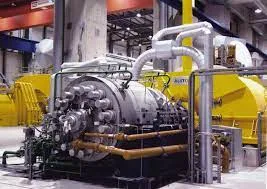Millions of commercial buildings in Australia and the United States are served by boilers which are used to heat and pressurize water into steam.
A boiler feed pump is responsible for circulating water in boilers, and it operates by transferring water from its source into a boiler. These pumps generally circulate water to the boiler via a return pipe.
Boiler feed pumps typically operate at high pressures and thus require specialized components. For this reason, they are usually installed on top of the boiler.
Here are five interesting facts about boiler feed pumps:
1. Boiler feed pumps to supply fresh water to a boiler
A boiler feed pump draws water from a supply tank or its own water source and pumps it to the boiler. This is to ensure that a continuous supply of freshwater is maintained, so it does not run dry. Different boiler pumps use different mechanisms to speed the water to the boiler.
2. They help a boiler operate efficiently
Today’s boilers use steam to heat many buildings, including hospitals, schools, hotels, office buildings, and more. They can be quite large, reaching over 100 feet in length. The steam they produce is pressurized, or pressurized steam, which is heated to over 365 degrees Fahrenheit.
Due to the temperature, any water used to heat and pressurize this steam must be very clean. Boiler feed pumps help a boiler operate efficiently by circulating water through the system and keeping it clean.
3. There are two main types of a boiler pump
There are two basic types of boiler pumps or circulators. The impellor pump is the traditional design, while the centrifugal pump is a more modern design.
Impeller pumps use a gear system to turn a shaft. A magnet attached to the shaft draws water, which is then pushed through a pump. Impeller pumps have a minimum flow of 1.5 gallons per minute, and they’re recommended for smaller boilers.
Centrifugal pumps use centrifugal force to create a vacuum that draws water through a pump. These pumps have a minimum flow of 2.2 gallons per minute, and they’re recommended for larger boilers.
4. Boiler feed pump failures are expensive
Boiler feed pump failures are expensive, and they require quite a bit of maintenance. When a boiler feed pump fails, it can take down an entire facility. Moreover, these pumps can be repaired, but they rarely last more than a few years. At some point, a pump will require complete replacement.
5. These pumps require high pressures to feed the water
Boiler pumps are designed to provide high flow rates at high heads to operate at high temperatures of up to 140 °C (285 °F). These pumps are large, powerful, and can run at frequent intervals (one pump cycle takes only 0.8 seconds). Due to pressures and temperatures, boiler pumps are expensive, but they deliver reliability and long life.
However, this high pressure can damage the pump and other components of the pump system. Pump manufacturers recommend a maximum pressure rating, but pumps can be damaged even before reaching that rating. The manufacturers also recommend that pumps should be shut down before exceeding the maximum pump rating.







